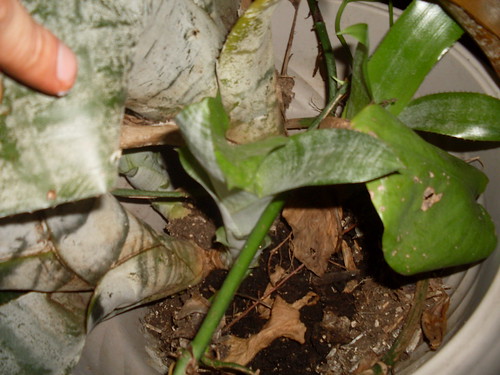1) Use a media that works for you

I've planted this Aechmea fasciata in a very light mix. It has a bit of soil, orchid bark, perlite and coco fiber. It is very light and as you can see, there is a pup - a new bromeliad, growing in. Actually, there are three so far. This pot has a lot of drainage. The point I'm trying to make here is that there is undoubtedly a media that will work with the plant and work with you. This mixture is very forgiving if I forget to water, but it also won't turn into a bog container in the heaviest Houston rains.
2) Don't give up on the plant
3) Make it pretty

I put those two together since they both tie to this picture. You see the red bromeliad (unknown species to me, and I don't really care)? I obtained my first division of that plant with the thought that it was destined for death as certainly as Justin Bieber is destined for ridicule. It was dried and fried, had absolutely no roots and the foliage had all been crushed. That was only a year ago, now it has 6 pups coming in. Bromeliads are capable of remarkable regeneration as long as you can provide them a consistent level of care. That's where the third point comes in. I absolutely love how the thin red foliage plays off the wide green foliage of a Neoregelia sp. in this container. By creating something you like to look at, you're more likely to take care of it.
4) If it's not hurting it, leave it be!

For all intents and purposes, this is not a pretty bloom spike. This spike initially bloomed in June (so, four months ago?). The pink spike was much more vibrant, not to mention the showy blue and purple flowers. However, the spike is not hurting the plant... and in all actuality, it's provided a nice tropical touch to my balcony for the past couple months.
So there you have it... just a few quick and easy tips for dealing with Bromeliads. Of course, there are so many different conditions and there is a lot to think about. However, these plants are resilient and I don't see any reason why anyone should have a problem with them!
Great advice! I especially liked point #3 - it's so true that it's easier to take care of something pretty! :)
ReplyDelete5) Always sing to your plants... It couldn't hurt the plants and its sure to give your friends and neighbors a good laugh :)
ReplyDelete